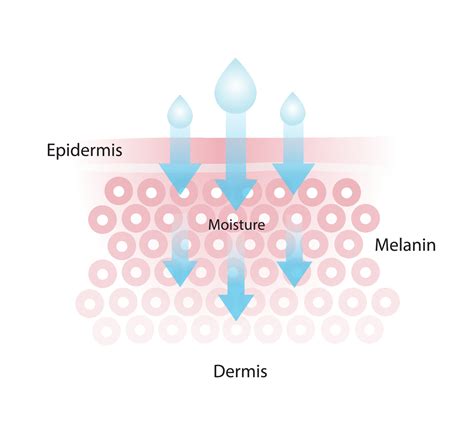**Eliminate the Nuisance: A Comprehensive Guide to Effective Gnat Traps**
Introduction
Gnats are a common pest that can quickly become a nuisance in any home or business. These tiny flying insects are attracted to moisture and decaying organic matter, and they can spread bacteria and diseases. However, with the right tools and techniques, it is possible to effectively trap and eliminate gnats. This article provides a comprehensive guide to creating and using effective gnat traps, ensuring a pest-free environment.
Understanding Gnat Behavior
To create effective traps, it is important to understand the behavior of gnats. Gnats are attracted to:
-
Moisture: Gnats lay their eggs in moist areas, such as drains, sinks, and damp soil.
-
Organic matter: Gnats feed on decaying organic matter, including food scraps, fruit, and garbage.
-
Light: Gnats are attracted to light, especially at night.
Step-by-Step Gnat Trap Creation
Apple Cider Vinegar Trap
Materials:
- Apple cider vinegar
- Clear glass or jar
- Plastic wrap or aluminum foil
- Rubber band
Steps:

- Pour apple cider vinegar into the glass or jar, leaving approximately 1 inch of space at the top.
- Cover the opening with plastic wrap or aluminum foil.
- Secure the covering with a rubber band.
- Poke several small holes into the covering to allow gnats to enter.
Wine Trap
Materials:

- Red wine
- Clear glass or jar
- Plastic wrap or aluminum foil
- Rubber band
Steps:

- Fill the glass or jar with red wine, leaving approximately 1 inch of space at the top.
- Cover the opening with plastic wrap or aluminum foil.
- Secure the covering with a rubber band.
- Do not poke any holes into the covering.
Fruit Trap
Materials:
- Overripe fruit (e.g., bananas, apples)
- Shallow dish or bowl
- Plastic wrap or aluminum foil
Steps:
- Place the overripe fruit in the shallow dish or bowl.
- Cover the dish or bowl with plastic wrap or aluminum foil, ensuring that the edges are sealed.
- Poke several small holes into the covering to allow gnats to enter.
Common Mistakes to Avoid
-
Overfilling the trap: Do not fill the trap too high, as gnats may escape if the liquid level rises.
-
Using too much bait: Gnats are attracted to small amounts of bait. Do not use excessive amounts, as this can overwhelm the trap.
-
Placing the trap near food: Avoid placing gnat traps near food, as this can attract more insects. Instead, position traps in areas where gnats are most active, such as near drains or sinks.
-
Ignoring drain maintenance: Regularly clean drains and sinks to remove moisture and organic waste that attract gnats.
-
Using chemical pesticides: While chemical pesticides can be effective in killing gnats, they can also be harmful to humans and pets. Consider using non-toxic methods first.
Tips and Tricks
-
Add dish soap: Adding a few drops of dish soap to apple cider vinegar or wine traps can increase the surface tension of the liquid, making it easier for gnats to drown.
-
Use multiple traps: Place multiple traps in different areas of your home or business to increase the likelihood of catching gnats.
-
Replace traps regularly: Empty and refill traps regularly to keep them effective.
-
Dispose of gnats properly: Once caught, gnats can be disposed of by pouring the trap contents down the drain or flushing them down the toilet.
Table 1: Comparison of Gnat Trap Types
| Trap Type |
Bait |
Effectiveness |
| Apple cider vinegar trap |
Apple cider vinegar |
High |
| Wine trap |
Red wine |
High |
| Fruit trap |
Overripe fruit |
Medium |
Table 2: Gnat Prevention Measures
| Area |
Maintenance |
| Drains |
Clean regularly with bleach or vinegar |
| Sinks |
Clean regularly with soap and water |
| Garbage |
Dispose of garbage regularly in a sealed container |
| Food storage |
Store food in airtight containers |
| Moisture control |
Address leaks and condensation |
Table 3: Gnat Facts
| Statistic |
Source |
| Gnats can lay up to 300 eggs at a time. |
University of California |
| Gnats can live for up to 30 days. |
USDA |
| Gnats are known to transmit over 100 different diseases. |
World Health Organization |
FAQs
1. How long does it take for a gnat trap to work?
A: Gnat traps can start working within hours. However, it may take several days to catch a significant number of gnats.
2. How often should I change the bait in my trap?
A: Replace the bait every few days, or as needed, to keep the trap effective.
3. Can I use commercial gnat traps?
A: Commercial gnat traps can be effective, but they often contain harmful chemicals. Consider using homemade traps as a safer alternative.
4. How can I prevent gnats from entering my home?
A: Seal any holes or cracks in your home's exterior, and use screens on windows and doors.

5. What if my gnat traps are not working?
A: If your traps are not working, try using different bait or placing them in different locations. You may also need to clean drains and remove standing water.
6. How do I know if I have a gnat infestation?
A: Signs of a gnat infestation include small, flying insects near drains, sinks, and decaying organic matter.
Call to Action
Gnats can be a nuisance, but they can also be eliminated with the right tools and techniques. By using effective gnat traps and implementing preventive measures, you can create a pest-free environment for your home or business. Remember to regularly maintain your traps, address the underlying causes of gnat infestations, and dispose of gnats properly. With persistence and proper execution, you can effectively eliminate gnats and enjoy a comfortable space.

